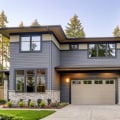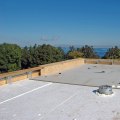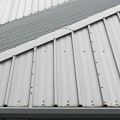When it comes to roofing, there are two main types of roofs: flat and pitched. Both have their own advantages and disadvantages, but which one is more expensive? The answer depends on a variety of factors, such as the size of the roof, the materials used, and the complexity of the installation. Flat roofs are generally more practical than pitched roofs. They are easier to install, require less maintenance, and have a much lower cost.
Not only that, but they are also of high quality and high performance, making them a cost-effective option. You can do a lot of things with your flat roof, such as adding decorative or recreational finishes. Sloped roofs can be more expensive to install than flat roofs due to the additional materials and labor they require. They also require more skill and experience to install than flat roofs, which can increase the cost and the chance of errors occurring during installation.
Sloped roofs require more maintenance than flat roofs due to the need to keep gutters and valleys clean and free of debris. Flat roofs are ideal for large spans as building beams to support large spans is not only complex but also expensive and impractical. Flat roof estimation is more suitable for complex buildings or multi-level structures. Flat roofs offer more space for solar panels and roof gardens than sloped roofs, which can be useful for reducing energy costs and increasing the sustainability of your home. However, flat roofs tend to have less insulation than sloped roofs, which can result in higher energy costs and lower comfort levels in your home. Flat roofs also tend to retain water at the top of the house or building, and standing water can damage not only the outside of the structure but also the furniture and carpet inside once it sinks. In conclusion, both flat and pitched roofs have their own advantages and disadvantages when it comes to cost.
Flat roofs are generally more practical due to their lower cost, easier installation, and less maintenance requirements. However, sloped roofs tend to be more expensive to install but last longer due to their more robust design and better drainage. When deciding between a flat or pitched roof for your home or business, it's important to consider all factors involved. The size of the roof, materials used, complexity of installation, insulation levels, maintenance requirements, and overall cost should all be taken into account when making your decision. With careful consideration of all these factors, you can make an informed decision that will best suit your needs.



